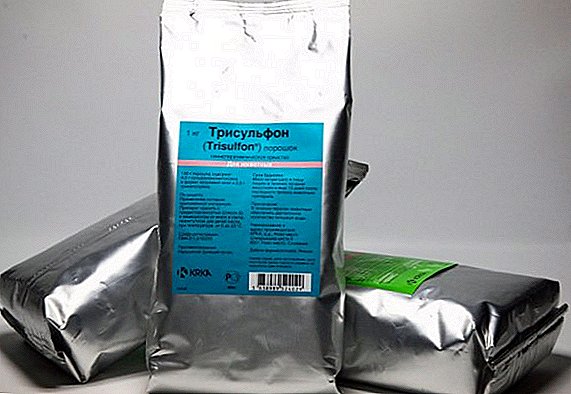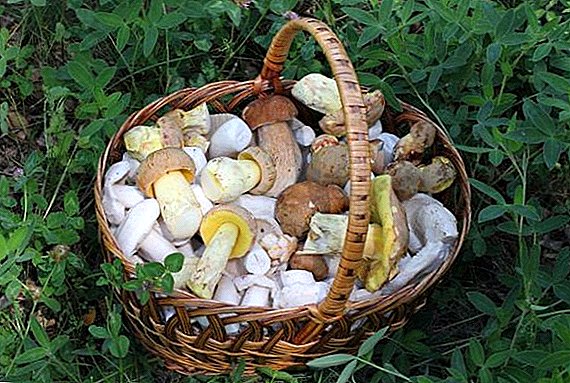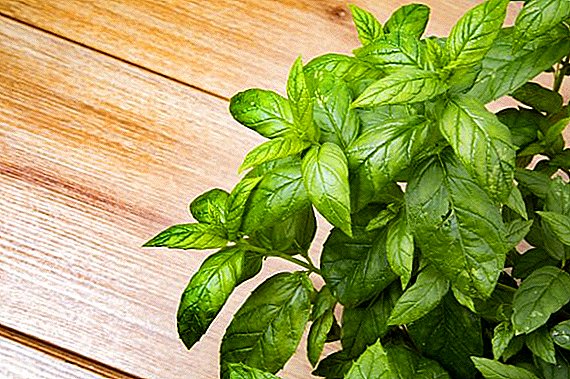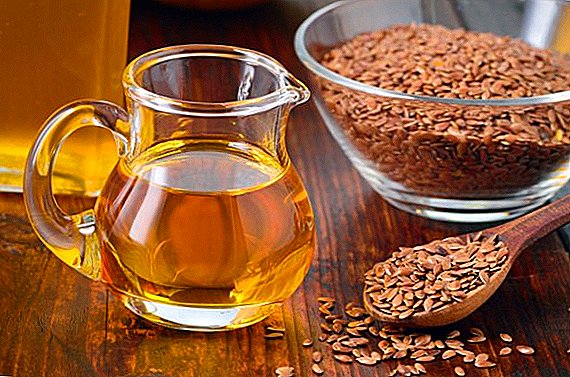 About the benefits of flax, annual plants from Flax family, We also knew our great-grandmothers, who used it extensively in recipes for traditional medicine and for culinary purposes. Many years have passed, but it has not lost its relevance, because, thanks to the properties of its composition, flax is truly indispensable in many spheres of human activity. Let's find out what unique characteristics the specified plant and oil from it possess.
About the benefits of flax, annual plants from Flax family, We also knew our great-grandmothers, who used it extensively in recipes for traditional medicine and for culinary purposes. Many years have passed, but it has not lost its relevance, because, thanks to the properties of its composition, flax is truly indispensable in many spheres of human activity. Let's find out what unique characteristics the specified plant and oil from it possess.
Description
Meet today linen can both in a wild-growing look, and in private territories, the main thing is for it to be created all the conditions of growth. First of all, the composition of the soil is important, because the plant feels good only on wet loamy soils, which are distinguished by an average density (they must be able to pass air and water well). On sandy or heavy clay soils, it grows much worse, especially if the area is not protected from strong gusts of wind. If you comply with all cultivation requirements, you will get good and high-quality seeds, of which later (after drying and pressing) you will make flaxseed oil of interest to us.
Learn how to plant and care for large-flowered flax.

The specified product is a colorless or yellowish fatty liquid, which, when interacting with air, dries quickly and forms a solid colorless film.
Flax oil doesn’t taste like sunflower or olive oil we are used to: it is distinguished by more bitter taste. True, one should not confuse the natural moderate bitterness with too palpable, because in the latter case, one can speak either about improper preparation of the product, or about the expiration of its shelf life. 
Linseed oil is usually used in its natural liquid state, but for medicinal purposes. Capsules are often used. Like any other, it can be unrefined, refined, hydrated, deodorized. Of course, the most useful would be the first option, which gets rid of impurities only by settling and filtering, without using any other substances. True, an unrefined product has one major drawback - a limited shelf life (very quickly a natural sediment can be seen at the bottom of the tank).
Did you know? In flax oil there are much more unsaturated fatty acids than in the usual products of our daily diet, so only 1-2 tablespoons per day will provide the body with the daily rate of these substances.

Composition
The benefits of each product are explained by its chemical composition, therefore, in order to better understand the value of flaxseed oil, you should familiarize yourself with the list of its components.
- Fat: up to 60% omega-3, about 20% omega-6, 10% omega-9.
- Saturated fatty acids (per 100 g of product about 9.6 g): myristic, thearic and palmitic.
- Vitamins: A, groups B (B1, B2, B3, B4, B6, B9, B12), E, K, H, C, D.
- Macro and trace elements: phosphorus, magnesium, iron, zinc, potassium, in addition to which linamarin, phytosterols, squalene (about 8% of the total), lecithin and beta-carotene.

Many vegetable oils have remarkable beneficial properties. Read about the beneficial properties of oils: prickly pears, cloves, citronella and black cumin.Despite such an impressive list of important components that are necessarily present in every natural product, the complex of poly- and monounsaturated fatty acids is more valuable than the rest. For example, well-known omega-3, which is extremely necessary for us, is either completely absent from the usual food or is present in extremely small quantities (even in comparison with fish oil in the specified oil, this component is twice as large).
As for the calorie content of the product, then, like any other, similar to it, it can not be called low-calorie, After all, there are 898 Kcal per 100 grams. Also worth noting is the complete absence of proteins and carbohydrates, while fats per 100 g as much as 99.8 g. 
Beneficial features
Of course, such an impressive list of useful elements of the oil can not affect the state of the human body, especially when it comes to regular use of the product. Therefore, let's take a closer look at its characteristics in this context. Among the main stand out:
- lowering cholesterol, normalizing blood pressure and preventing the development of heart disease (with regular use significantly reduces the risk of developing heart attacks);
- strengthening vessels and reducing blood viscosity. With the continuous use of flaxseed oil, the vessels are not only cleared of cholesterol, but also acquire proper elasticity, thereby preventing the development of coronary heart disease, hypertension and atherosclerosis. The blood viscosity index is significantly reduced;
- a decrease in the intensity of the inflammatory process in gout or lupus. Fatty acids present in the composition reduce inflammation and, together with the rest of the components, lower cholesterol, which often increases with the development of these ailments. With gout, regular intake of flax oil is quite capable of reducing the sudden pain in the joints and reducing swelling, while the omega-3 complex improves iodine absorption, which is simply an indispensable component in the treatment of certain diseases (for example, mastitis in women);
- elimination of constipation, treatment of hemorrhoids and diverticular disease. The fiber present in the seed coat contributes to a mild cleaning of the intestines and removes toxins and slags from it, while at the same time restoring the mucous surface. In case of diverticular disease, the fiber of crushed flax seed perfectly cleans the stomach sacs and prevents the development of infectious processes;
- treatment of dermatological problems (acne, eczema, psoriasis and sunburn). In all these cases, essential fatty acids are truly healing, because they have an anti-inflammatory effect on itchy spots and contribute to a more rapid recovery of the skin. In addition, it is the NLC that reduces the secretion of a special substance by the sebaceous glands, thereby avoiding clogging of the pores;
- improving the quality of transmission of nerve impulses. In this case, regular use of flaxseed oil effectively eliminates limb numbness and tingling, and some experts even note its usefulness in treating degenerative diseases of the central nervous system, Parkinson's disease and multiple sclerosis.
In addition to flax oil, dermatology also uses: medicinal comfrey (zhivokost), horsetail (sausage), anise lofant, asparagus, verbena medicinal, mordovnik, parsnip, peony, melon, acacia honey and feijoa.

These are basic, but far from the only useful "skills" of flax oil, therefore, if you are suddenly confronted with a particular problem, do not forget to recall it.
Important! High blood viscosity and reduced vascular elasticity are the main causes of thrombus formation, which can lead to death.Flax well restores the health of nails and hair (the lack of fatty acids in the body contributes to their dullness and fragility), reduces the risk of developing malignant tumors (in this case, the main role is given to lignins), alleviates the unpleasant symptoms of menopause, reduces the intensity of menstrual pain and can even serve as an additional element in the treatment of endometriosis and infertility in women. With regard to men's health, the benefits of flaxseed oil are manifested in the fight against male infertility and impotence.

Did you know? Human brain cells are 60% fat, mostly represented by omega-3 and omega-6 fatty acids, which are not able to be synthesized in our body on our own, but they do not change along with flaxseed oil.
Application
Despite all the positive properties of flax oil, to achieve the most effective results from its use, you need to know exactly how to use it. Depending on the nature and characteristics of the disease, the treatment regimen in each case will have Some specific features:
- to eliminate constipation, it is enough to drink 1-2 tablespoons of the product twice a day before meals;
- in the treatment of gastritis, as part of the complex therapy, linseed oil is used for three months (one teaspoon three times a day, washed down with warm water);
- prevent the development of heartburn and relieve its seizures by drinking one dessert spoonful of butter 3-4 times a day (before or during the meal);
- in order to maintain normal liver function, take 30–40 g of oil per day, dividing the dose into several doses;
- development of inflammatory processes in the oral cavity can be prevented by rinsing the mouth with flax oil 2-3 times a day for several minutes;
- ischemia and atherosclerosis of the vessels is eliminated within 3-6 months, during which it is necessary to use 1 tablespoon of oil per day;
- if there are diseases, this means is simply applied to the affected areas of the body, leaving it to dry completely (it helps to cope with eczema, psoriasis, depriving, skin rashes), and if you need to quickly eliminate the burn, then add lime water to the flax oil 1: 1 ratio and apply to the affected area a couple of times a day;
- in the fight against cancer two tablespoons of flax oil must be mixed with 100 g of cottage cheese and, having achieved a uniform consistency, eat it all at one time.

Any adult without any contraindications can safely take flaxseed oil in quantities up to 10 ml per day. Of course, for the treatment and prevention of diseases in children, this provision will be somewhat reduced. For health purposes, this product can be administered to even the smallest patients, for lubrication of the skin, local or internal use.
Many experts allow the use of flaxseed oil from birth (along with milk), determining the dosage of the product, taking into account the age of the baby: how many months a baby has as many drops and can be used. Starting from six months, the dose is increased to 12-15 drops per day, from one year to three you can give half a teaspoon oil twice a day, and from 3 to 7 years the amount is increased to 1 full teaspoon twice a day. 
Use flax oil not prohibited even during pregnancy and lactation, however, its consumption during this period is better to limit. In the first case, to improve general well-being and reduce the development of constipation, a woman sometimes needs to use 1-2 tablespoons of oil per day, while in the second it is possible to use the product only after prior consultation with a pediatrician (especially the condition of infants can be a significant contraindication).
Important! No matter how safe the chosen product may seem to you, and no matter how merit it may be in the past, each time you need to start using it with limited doses, gradually reaching the desired dosage.

Harm and contraindications
Any, even a natural product of plant origin can not be considered completely safe, since the reaction of each organism to it is not always fully predictable. As for flaxseed oil, it is usually well digested, and Contraindications to its use are the following diseases:
- hepatitis and cholecystitis;
- chronic pancreatitis;
- polyps in the uterus and appendages;
- cholelithiasis;
- liver disease.

In addition, doctors advise people who take antidiabetic or anesthetic medicines to avoid using the product, as well as those who use special means to thin the blood (while taking it can be bleeding).
Do not forget and about possible side effects sometimes accompanying the use of flaxseed oil. Thus, when the recommended dosage is exceeded, meteorism, diarrhea and even allergic reactions of various origins, but this happens infrequently.
Allergies can also be caused by: garlic, evergreen boxwood, maral root, evening primrose, goldenrod, lavender, Chinese cabbage, sedge grass, sweetcorn, and strawberries.Among flaxseed oil deficiencies - tendency to rapid oxidation, so that you don’t save much for the future.

Application
In addition to medical purposes, flax oil widely used in cosmetology and cooking, helping to improve the condition of hair and skin. For example, you can combine the product with egg yolk, sunflower and essential oils, to which you can also add several vials of nicotinic acid: this mixture will be an excellent hair mask, giving them shine, softness and silkiness.
Flax oil, honey, yolk and sour cream can also help with cosmetic skin problems (especially in the case of drying), and if you have a little bit of a mixture, it is also perfect for restoring the condition of the skin on other parts of the body. In addition, it is impossible not to note the use of flaxseed oil in relation to the nails, especially during the season of lack of vitamins. All that is needed for their well-groomed appearance and good growth is to regularly rub the product into the nail plate.

In cosmetology, they also use momordica, purslane, marigolds, nasturtium, leek, bird cherry, rosemary, cornflower, broccoli, garden savory, soapworm (saponaria), honey and lime.Some people claim that this unique tool is capable increase libido and even enlarge breasts but from a medical point of view, these facts are not proven. Who knows, perhaps regular consumption of flax oil will really help in your situation, but everything is entirely individual.
Useful properties of the described plant have long been used in cooking, but the relevance of using oils is a relatively new discovery. Given that it needs to be consumed fresh, the most suitable option would be salad dressing, especially since it goes well with sunflower and olive.  Dishes from fresh produce or even salads from sauerkraut will only expand their flavor characteristics, and using the right seasoning will not even have to be salted. If you wish, you can add butter to your favorite cereals, because it combines well with many cereals.
Dishes from fresh produce or even salads from sauerkraut will only expand their flavor characteristics, and using the right seasoning will not even have to be salted. If you wish, you can add butter to your favorite cereals, because it combines well with many cereals.
Important! In no case can not heat the flax oil. It is used exclusively in ready-made dishes.

How to choose
So we went to the most important issue - the purchase of linseed oil. Undoubtedly, it has a number of useful and very important properties for the body, but this is true only in the case of using a high-quality and natural product that has yet to be chosen. Let's find out what is worth paying attention to in the first place.
- Tara (packaging). Ideally, it should be a small bottle of dark glass, which prevents damage to the contents when exposed to direct sunlight. Plastic containers are not suitable for long-term storage of oil, because over time it reacts with the material and loses all its benefits. If you are not sure about the long-term use of the product, it is better to choose small bottles that will be consumed as soon as possible.
- The inscriptions on the label. Be sure to review all the information provided to you by the manufacturer, in particular, and about the method of production of a particular product. Of course, in the "Composition" column, only flax oil itself should be indicated, without any impurities or other oils, prepared by cold pressing of seeds.
- Color flax product. High-quality oil should be different golden-brown color, and if it is too light and imperceptible sediment, then it was further purified (refined). True, it will not bring benefit and too dark product, because it will indicate the use of a hot cleaning method, because of which there are practically no useful substances inside.
- Aroma and taste properties of the product. As we mentioned earlier, real flaxseed oil will have a slightly bitter taste, something resembling fish oil. However, the strong bitterness and unpleasant aroma is evidence of a poor quality product.
- Shelf life. In most cases, such products are not stored for more than six months, of course, if we are talking about the natural composition prepared by cold pressing. Therefore, if you see the designation of 1 or 2 years, then with high probability we can talk about the presence of preservatives inside. Of course, it is advisable to buy as fresh products as possible.

Important! Do not attach much importance to bright inscriptions like “with vitamin E”, since this component is already contained in the product, and its colorful mention is most likely used to increase the value of the product.And finally, when going to the store, be sure to pay attention specific place of storage of goods: in no case should the sun's rays fall on the shelves. If this is not the case, it is advisable to find another sales point where you will be offered oil from the refrigerator.

How to store
If you bought flax oil, but did not open it, it means that you have about six months to use it (assuming that this is the most fresh product). An open package can be stored for no more than one month from the beginning of use, otherwise the risk of saturating the body with free radicals, and not with beneficial omega-3 acids, is very, very high. Just in case, remember A few simple rules for storing flaxseed oil at home:
- Keep this unusual product only in a glass container, tightly sealing it with a lid every time after use. Fatty acids very easily begin to interact with the air, because of what the product loses some of its benefits. In some cases it will be useful to pour oil into a bottle with a narrower entrance, but again, performing this task as quickly as possible;
- The best storage place for linseed oil is a refrigerator: sunlight does not penetrate inside and the optimum temperature is always maintained (no more than +10 ° C). However, it is desirable to place the container in the door, avoiding very cold zones;
- if by chance, the product has stood for some time in the sun (even if it is no longer than half an hour), it is no longer usable, just as a composition with an expired shelf life cannot be used. There are no useful substances left in it, and in large quantities such oil can harm the body.

As you can see, the benefits of flax product can really be a lot, but no matter how well you are treated to the recipes of traditional medicine, you should not forget about the sense of proportion and possible contraindications, therefore Before using flax oil, it is better to discuss this possibility with your doctor.












